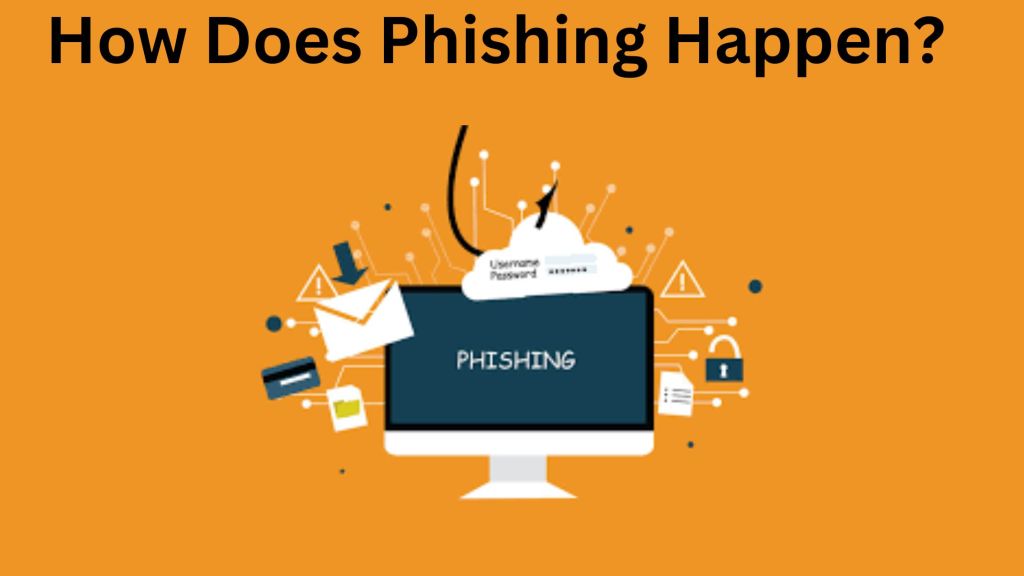Phishing is a form of cyberattack where attackers attempt to deceive individuals into divulging sensitive information such as usernames, passwords, credit card numbers, or other personal data. The term “phishing” is derived from “fishing,” indicating the attackers are “fishing” for victims’ information. Phishing attacks can take various forms, but they all share the common goal of tricking the recipient into providing confidential information. Here’s a detailed look at how phishing happens.
Types of Phishing Attacks
1.Email Phishing:
- Mass Email Campaigns: Attackers send a large volume of emails to random recipients, hoping that some will fall for the scam. These emails often impersonate reputable organizations like banks, online services, or government agencies.
- Spear Phishing: This is a targeted form of phishing where attackers customize emails for a specific individual or organization. By using personal information gathered from social media or other sources, the attacker makes the email appear more credible.
- Whaling: A specific type of spear phishing targeting high-profile individuals such as executives, CEOs, or other high-ranking officials. The stakes are higher, and the potential rewards for attackers are significant.
2. Clone Phishing:
- Attackers create a near-identical copy of a legitimate email previously sent by a trusted source. They modify the cloned email with malicious links or attachments and resend it to the original recipients.
3. Vishing (Voice Phishing):
- Attackers use phone calls to impersonate legitimate organizations and convince victims to provide personal information. Vishing scams often involve automated calls (robocalls) or direct calls from fraudsters pretending to be from banks, tech support, or government agencies.
4. Smishing (SMS Phishing):
- Attackers send deceptive text messages to trick recipients into clicking malicious links or providing personal information. These messages often appear to come from banks, delivery services, or other trusted entities.
5. Pharming:
- Instead of targeting individuals directly, pharming redirects users to fake websites by exploiting vulnerabilities in DNS (Domain Name System) or using malicious software. Once on the fake site, victims may unknowingly enter sensitive information.
The Phishing Process
1.Research and Preparation:
- Gathering Information: Attackers collect information about their targets through various means, such as social media, public records, and data breaches. For spear phishing and whaling, attackers perform extensive research to personalize the attack.
- Creating a Hook: Attackers craft a convincing message or website that appears legitimate. This involves mimicking the design, language, and tone of the organization being impersonated.
2. Delivery:
- Email: The most common delivery method. Attackers send out phishing emails en masse or to targeted individuals. These emails often contain malicious links or attachments.
- Phone Calls and Texts: Vishing and smishing rely on phone calls and text messages to reach potential victims. Attackers may use caller ID spoofing to make their calls appear legitimate.
3. Exploitation:
- Deceptive Links and Attachments: Phishing emails often contain links that lead to fake websites designed to steal login credentials or personal information. Attachments may contain malware that infects the victim’s device.
- Social Engineering: Attackers use psychological manipulation to exploit victims’ trust, fear, or urgency. They may create a sense of urgency by claiming that immediate action is required, such as resolving a security issue or verifying account information.
4. Data Collection:
- Harvesting Information: Once the victim interacts with the phishing link or attachment, the attacker collects the entered information or gains access to the victim’s system.
- Monetizing the Data: Stolen data can be used for various malicious purposes, such as identity theft, financial fraud, or selling the information on the dark web.
Conclusion
Phishing is a prevalent and evolving threat in the digital age. By understanding the methods and processes used by attackers, individuals and organizations can better protect themselves. Education and awareness are crucial in recognizing phishing attempts, while implementing robust security measures can help mitigate the risk. If you want to learn more about phishing and how to defend against it, check out ethical hacking tutorial to deepen your knowledge and skills.

